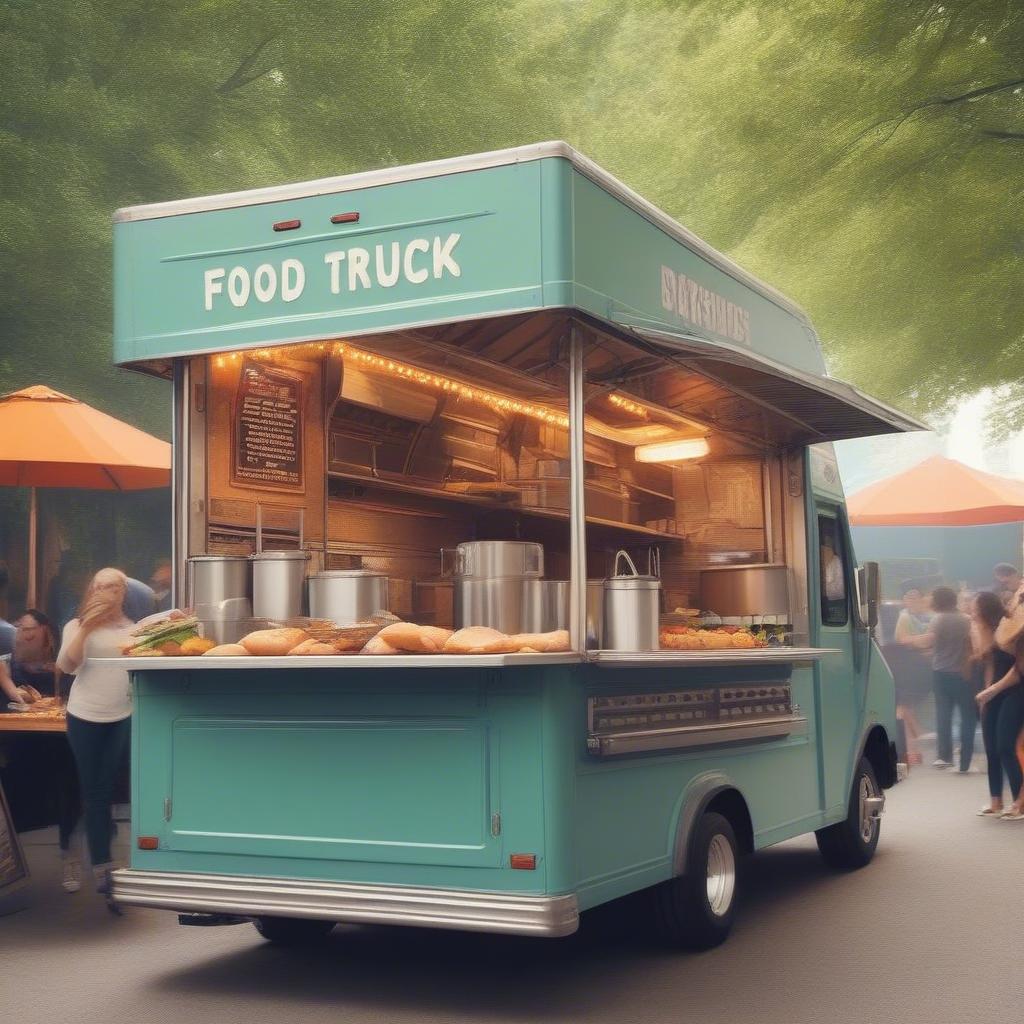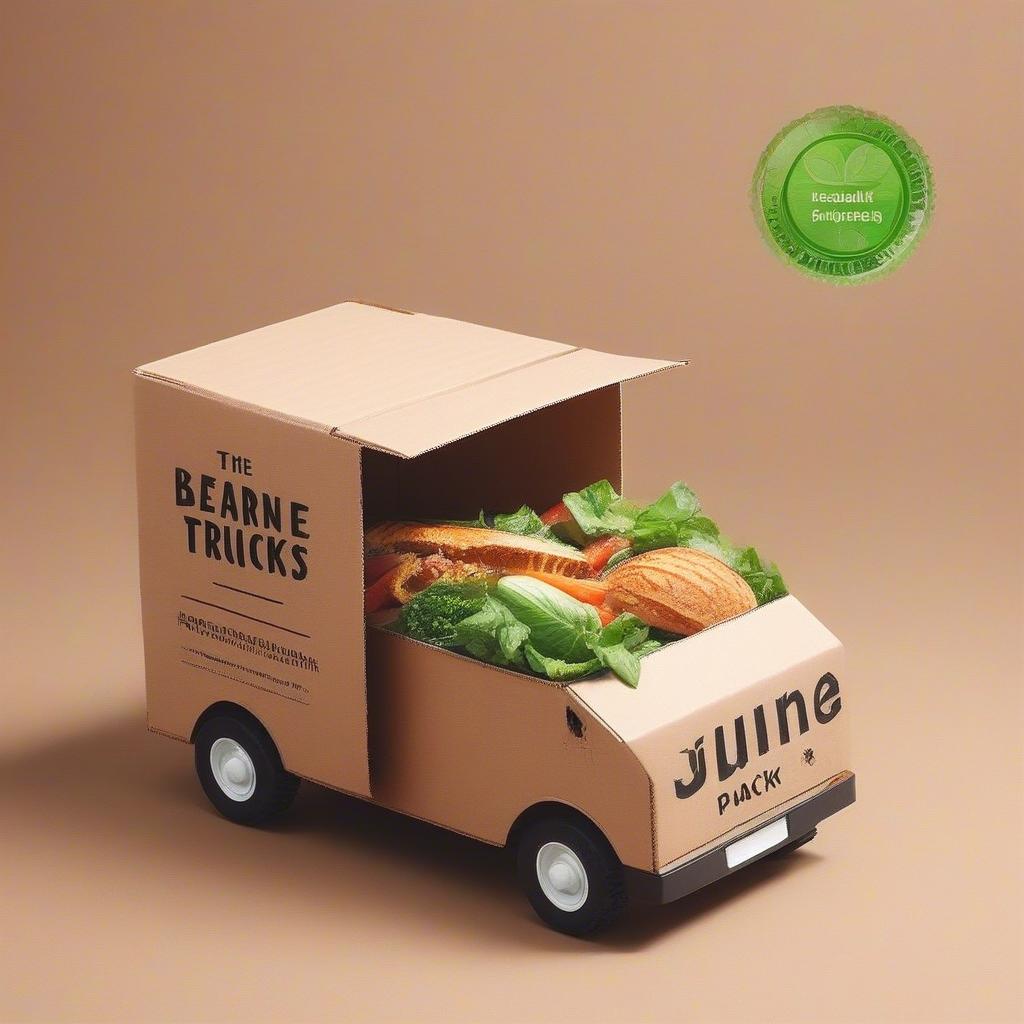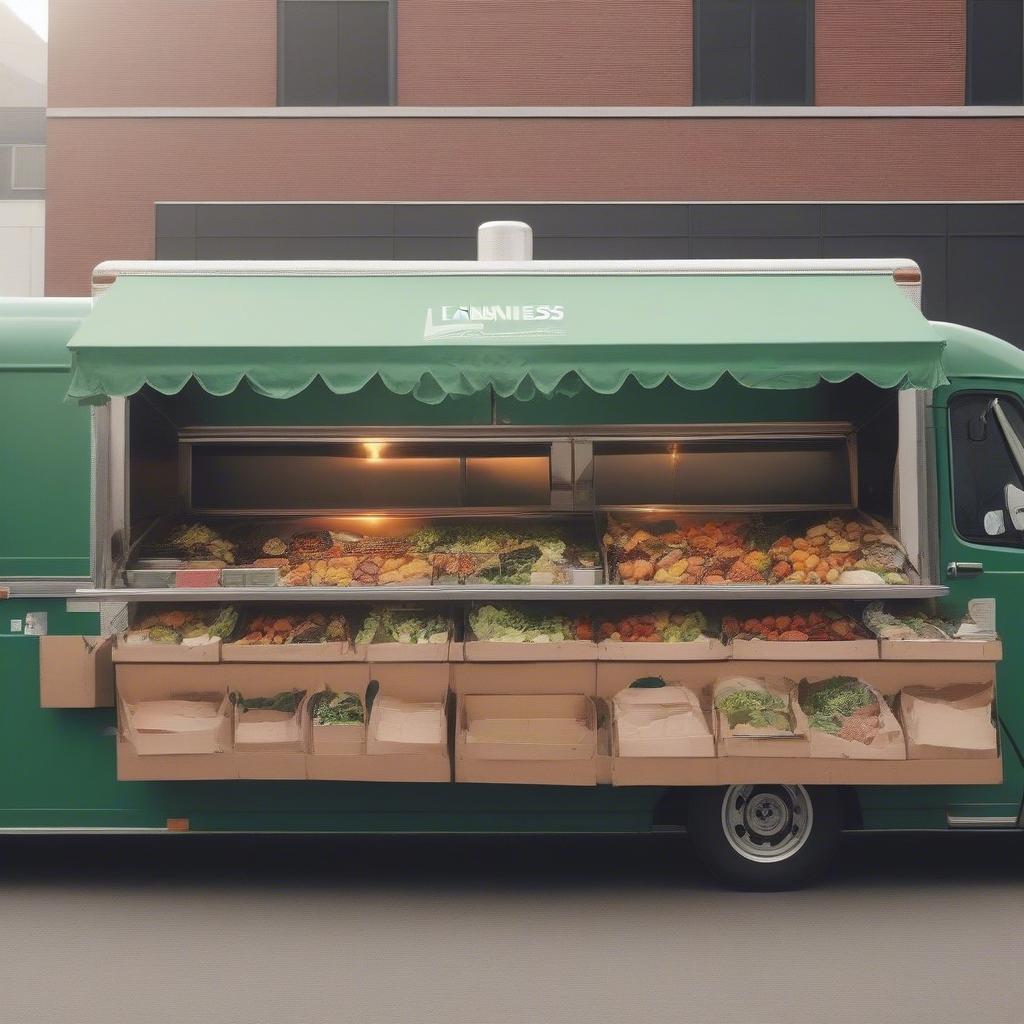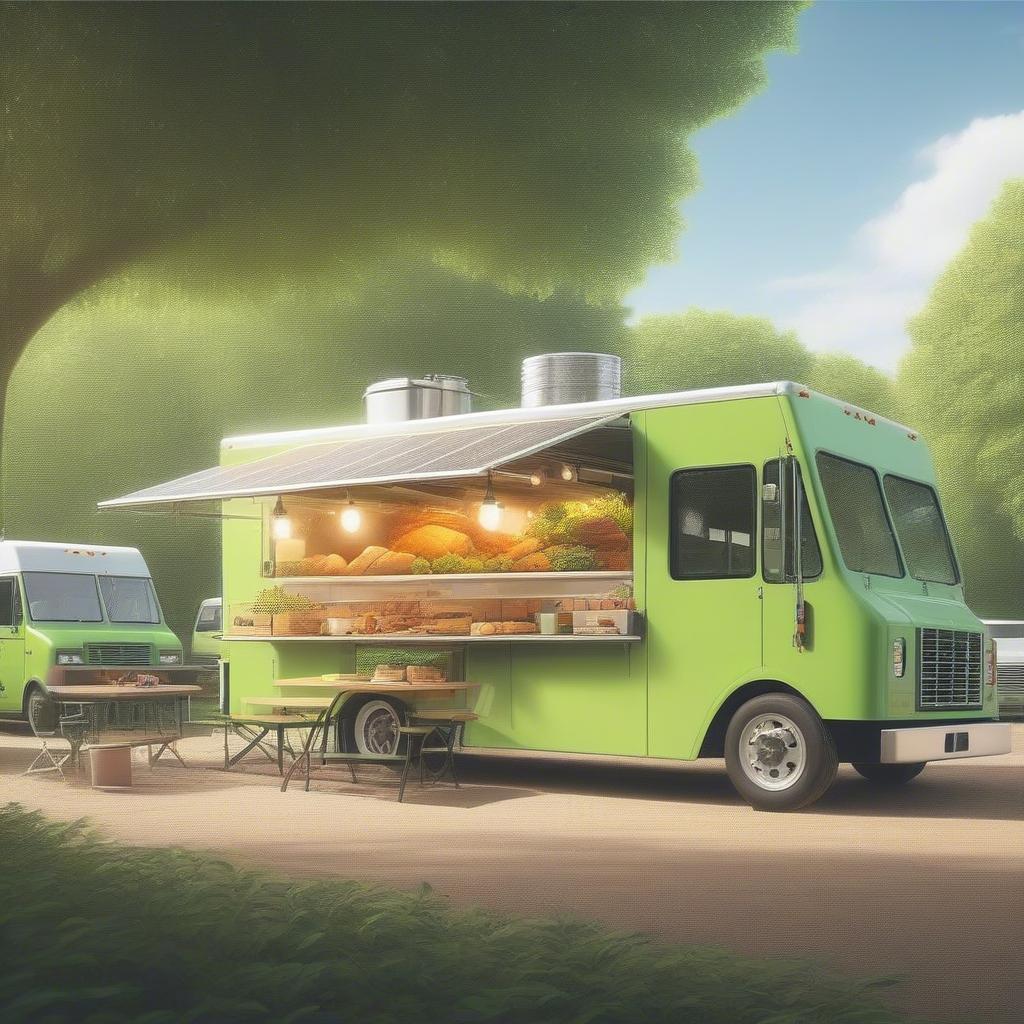
Food truck festivals are a vibrant, exciting, and potentially lucrative opportunity for mobile food vendors. However, merely showing up isn’t enough to guarantee success. To truly maximize your food truck profits at these events, you need a strategic approach, careful planning, and a willingness to adapt. This guide, distilled from years of experience in the mobile food industry, provides actionable money tips and proven strategies to elevate your festival success.
Planning for Festival Domination: The Pre-Event Checklist
Success at a food truck festival begins long before you arrive at the venue. Thorough pre-event planning is the bedrock of increased profitability.
Choosing the Right Festivals: Not All Events are Created Equal
- Demographic Alignment: Research the festival’s target audience. Does it align with your menu and brand? A vegan food truck might not thrive at a BBQ-focused event. Look for festivals that attract the types of customers who are likely to love your food.
- Festival Size and Foot Traffic: Consider both the expected attendance and the layout. Larger festivals mean more potential customers, but also more competition. Smaller, more intimate festivals might offer a better chance to make a strong impression.
- Festival Fees and Regulations: Compare vendor fees, required permits, and specific regulations. A seemingly cheaper festival might cost more in the long run if it has hidden fees or overly restrictive guidelines.
- Past Performance: If possible, research past festivals. Check reviews, social media posts, and vendor feedback to gauge the event’s overall success and profitability. Look for patterns and learn from the experiences of others.
- Strategic Calendar Planning: Don’t overextend yourself. Choose festivals strategically, considering your staffing capacity and available resources. Avoid scheduling too many events back-to-back to prevent burnout.
Crafting a Winning Menu: It’s More Than Just Food
- Streamlined Options: Don’t overwhelm customers with too many choices. Focus on a few best-sellers that you can execute quickly and efficiently. A simpler menu reduces waste and speeds up service.
- High-Profit Margin Items: Prioritize menu items with high-profit margins, such as side dishes and drinks. These can significantly boost your overall revenue without requiring a lot of extra labor or ingredients.
- Festival-Friendly Fare: Consider food that’s easy to eat while standing or walking. Avoid overly messy or complicated dishes. Think finger foods, handheld items, and single-serving portions.
- Unique Offerings: Stand out from the crowd by offering something different or unexpected. This could be a unique flavor combination, a signature dish, or a creative twist on a classic item.
- Pricing Strategy: Research competitor pricing at similar events and set your prices competitively. Be mindful of your costs, including ingredients, labor, and festival fees.
Inventory and Supply Chain Management: Avoiding Costly Shortages
- Accurate Forecasting: Estimate the expected number of customers based on the festival’s attendance and your past experiences.
- Strategic Ordering: Place orders well in advance to avoid shortages and late fees. Consider using a robust inventory management system to keep track of your supplies.
- Backup Plan: Have a contingency plan in case you run out of a popular item. This could be a secondary dish you can quickly prepare or a nearby supplier you can contact.
- Proper Storage: Ensure that all food is stored at the correct temperature to maintain quality and prevent spoilage. This is especially crucial at outdoor events.
- Minimize Waste: Use portion control and consider pre-packaging certain items to minimize food waste and maximize profits.
Essential Equipment and Logistics: The Nuts and Bolts of Success
- Reliable Equipment: Ensure that your food truck and all its equipment are in good working order. Conduct regular maintenance checks to prevent breakdowns.
- Power and Water: Secure access to reliable power and water sources. Bring backups, such as generators and extra water tanks, just in case.
- Waste Management: Plan for proper waste disposal. Bring enough garbage cans and recycling bins. Adhere to the festival’s regulations for waste management.
- Efficient Layout: Organize your food truck’s layout for maximum efficiency. Make it easy for staff to move around and serve customers quickly.
- Transport and Logistics: Plan your transportation and logistics carefully. Ensure that you arrive at the festival on time and with all the necessary supplies.
Team Preparation and Training: The Strength of Your Operation
- Staffing Needs: Determine the number of staff members you’ll need based on your expected volume and menu complexity.
- Role Clarity: Assign specific roles and responsibilities to each staff member. Ensure that everyone understands their duties.
- Customer Service Training: Train your staff to provide friendly, efficient, and helpful customer service. A positive attitude can significantly impact customer satisfaction.
- Speed and Efficiency: Train your staff on how to work quickly and efficiently while maintaining food quality and safety standards.
- Team Communication: Establish clear communication channels among your team to minimize confusion and ensure smooth operations.
Festival Day Execution: Maximizing Revenue and Customer Satisfaction
The day of the festival is when your planning comes to fruition. Here’s how to maximize food truck profits during the event itself.
Eye-Catching Presentation: Drawing in the Crowds
- Branding and Signage: Make sure your truck is clean, attractive, and prominently branded. Use colorful banners, eye-catching signage, and engaging graphics to draw in customers.
- Menu Boards: Create clear and easy-to-read menu boards. Highlight your best-sellers and high-profit margin items. Use enticing descriptions and high-quality images.
- Attractive Display: Present your food in an appealing way. Use attractive serving dishes, garnishes, and presentation techniques to entice customers.
- Cleanliness is Key: Maintain a clean and organized workspace. A clean truck sends a message of professionalism and hygiene to potential customers.
- Music and Ambiance: If appropriate, use music to create a fun and festive atmosphere. Consider other elements, such as lighting and decorations, to enhance your overall presentation.
Streamlining the Ordering Process: Efficiency is Key
- Clear Ordering Area: Designate a clear and visible ordering area. Use signage and barriers to guide customers through the ordering process.
- Multiple Order Stations: If possible, set up multiple order stations to reduce wait times. This can be especially helpful during peak hours.
- Pre-Orders and Mobile Payments: Consider offering pre-ordering options and mobile payment solutions to speed up the ordering process and cater to tech-savvy customers.
- Digital Menu Boards: Explore the possibility of using digital menu boards. These can be easily updated and can display more information than traditional boards.
- Quick and Friendly Service: Train your staff to be friendly, efficient, and attentive to customers. A positive customer experience will encourage repeat business.
Optimizing Sales Techniques: Turning Browsers into Buyers
- Upselling and Cross-selling: Train your staff to effectively upsell and cross-sell menu items. Offer add-ons, sides, and drinks to increase the average order value.
- Promotional Offers: Create special offers and promotions for the festival. This could include discounts, combo deals, or limited-time specials.
- Sampling and Tastings: Offer free samples to entice customers to try your food. This is an effective way to introduce new menu items and build customer interest.
- Engage with Customers: Encourage your staff to engage with customers and answer their questions. Personal interaction can help create a positive and memorable experience.
- Loyalty Programs: If possible, consider offering a loyalty program to incentivize repeat customers.
Managing the Flow of Customers: Minimizing Wait Times
- Efficient Workflow: Optimize your workflow to minimize wait times. Train your staff to handle orders quickly and efficiently.
- Order Management System: Use an order management system to track orders, manage inventory, and streamline the ordering process.
- Line Management: Manage the line to ensure it moves smoothly and efficiently. Consider using ropes, stanchions, or other line management tools.
- Communication is Key: Keep customers informed about their order status and estimated wait times. This can help manage expectations and prevent frustration.
- Adapt to the Crowd: Monitor the crowd flow and adjust your operations as needed to minimize wait times and keep customers happy.
Monitoring and Adjusting in Real-Time: Flexibility is Crucial
- Sales Tracking: Monitor your sales throughout the day to identify your best-selling items and areas for improvement.
- Customer Feedback: Pay attention to customer feedback and adjust your menu, service, or pricing as needed.
- Inventory Management: Keep a close eye on your inventory levels to ensure that you don’t run out of popular items.
- Team Performance: Monitor your team’s performance and provide feedback as needed.
- Be Prepared to Adapt: Be flexible and willing to adjust your plans as needed. Unforeseen challenges can arise, so it’s important to be adaptable.
Post-Festival Analysis: Learning and Growth
The end of the festival isn’t the end of the process. Post-event analysis is essential for continuous improvement and long-term festival success and to maximize food truck profits.
Evaluating Financial Performance: The Numbers Don’t Lie
- Total Revenue: Calculate your total revenue from the festival.
- Cost of Goods Sold: Determine your cost of goods sold for the festival.
- Gross Profit: Calculate your gross profit by subtracting your cost of goods sold from your total revenue.
- Operating Expenses: Calculate your operating expenses for the festival, including festival fees, staffing costs, and other miscellaneous costs.
- Net Profit: Determine your net profit by subtracting your operating expenses from your gross profit.
- Profit Margins: Calculate your profit margins for individual menu items and overall for the festival.
Analyzing Customer Feedback: The Voice of Your Audience
- Social Media: Monitor social media mentions and reviews of your food truck.
- Direct Feedback: Collect customer feedback directly through surveys, comment cards, or conversations.
- Identify Areas for Improvement: Use customer feedback to identify areas where you can improve your menu, service, or overall customer experience.
- Highlight Positive Feedback: Showcase positive feedback on your social media channels and website.
- Address Negative Feedback: Address negative feedback promptly and professionally. Use it as an opportunity to learn and grow.
Revising Strategies for Future Events: Continuous Improvement
- Menu Adjustments: Based on sales data and customer feedback, make adjustments to your menu.
- Pricing Optimization: Review your pricing strategy and make adjustments as needed.
- Workflow Improvements: Identify ways to improve your workflow to reduce wait times and increase efficiency.
- Staff Training: Provide additional training to your staff as needed.
- Equipment Upgrades: Consider investing in new equipment that can improve your operations and profitability.
Learn Business: Supporting Your Food Truck Journey
Learn Business understands the unique challenges faced by food truck owners. We provide the guidance, tools, and resources necessary to thrive in this competitive industry. Our comprehensive support includes:
- Business Plan Templates: Craft a professional business plan tailored specifically for your food truck, outlining your goals, strategies, and financial projections. We provide customizable templates that are easy to use and adapt to your specific needs. This can be especially useful for securing loans or investors.
- Financial Management Templates: Gain control of your finances with our detailed financial management templates. Track your income, expenses, and profits, and make informed decisions to improve your profitability. These templates can be tailored to your specific business and are user friendly.
- Marketing Plan Templates: Develop a robust marketing plan to attract customers and build your brand. Our templates provide a framework for creating targeted marketing strategies that resonate with your audience and create brand awareness.
- Operations Manual Templates: Create a comprehensive operations manual to standardize your procedures and ensure consistency. We provide templates to organize and document everything from food preparation to customer service, helping you maintain quality and efficiency.
- Expert Guidance: Connect with our experienced team for personalized guidance and support. We offer one-on-one consultations and workshops to help you navigate the challenges of running a successful food truck business.
- Community Support: Join our vibrant community of food truck owners to share ideas, ask questions, and learn from each other’s experiences. This network of like-minded individuals can provide valuable support and encouragement as you grow your business.
- Free Resources: Access our extensive library of free articles, templates, and guides designed to help you succeed. We’re committed to providing accessible resources to help you excel in the food truck industry.
- SEO Optimization Tools: Learn how to optimize your website and social media to attract customers online. Our tools and training resources can teach you SEO fundamentals, social media marketing tactics, and how to increase your online visibility.
Learn Business provides the foundation you need to build a thriving food truck business. We are committed to your festival success and helping you maximize your food truck profits.
Conclusion: Your Path to Food Truck Festival Prosperity
Maximizing profits at food truck festivals requires a comprehensive approach, combining meticulous pre-event planning, efficient day-of execution, and thorough post-event analysis. By carefully choosing the right festivals, crafting a winning menu, optimizing your operations, and engaging with your customers, you can dramatically increase your food truck profits. Remember that consistent learning, adaptation, and the support provided by resources like Learn Business are key to long-term festival success. Don’t just show up; strategize, execute, and thrive. The mobile food industry is competitive, but with dedication and the right approach, you can make your mark and achieve impressive money tips that will contribute to your food truck empire.



Leave a Reply